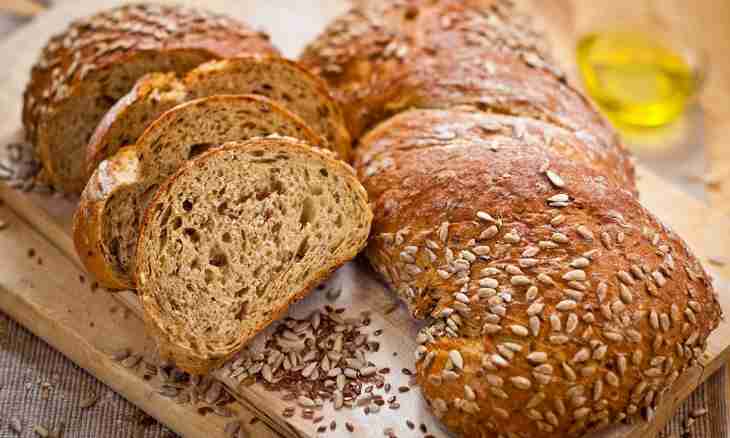Many postulates of the past are framed instinctively, but they are still relevant and are confirmed by modern researches. In the 17th century the royal decree took out the ban on sale and consumption of hot bread. Only then it was based only that the hot, sticky crumb is heavy for a stomach. Today application of refined flour and synthetic products which oppress intestinal microflora also was added to this fact and don't bear in themselves any advantage.
To the generation of people which grew at the time of a poor diet with strong belief that "bread – to all the head" not to understand how hot fresh bread can be not absolutely useful. They often remember the only dream of the childhood – to gorge on much. And what nourishing lunch can be without fragrant crisp grain crust! However caution of physicians that consumption of hot pastries is fraught with serious problems with a stomach and intestines, not groundlessly. It doesn't make sense to overpersuade grandmothers in the return because they mean a completely different product.
About what the wisdom of ancestors says
The fact is that ancestors baked bread of a coarse flour, most often rye to which a large number of bran was added. In such bread there are more food fibers, polysaccharides which well influence a vermicular movement of intestines and bring hazardous substances out of an organism. The enzymes which are in bran strengthen this action and besides help digestion of grain protein. Excessive acidity of a stomach can be the only contraindication to consumption of rye bread. In that case the rye product can cause heartburn. In one of written monuments to ancient Russia it is told "if a rye bread not переквашен and it isn't put too much salt, it is better than others the body feeds and gives rise to fresh blood".
Dough for baking of home-made bread was got without participation of yeast – on ferment. In Russia knew dozens of recipes for ferment by means of hop, rye flour, raisin, cherry juice, potatoes. And it was possible not to use every time a new portion of ferment, and only to leave a test piece from the previous batch. As a rule, cobs gave all the best on the leaf which isn't oiled, and powdered with bran or flour. It allowed to get rid of the oil crust rich with carcinogens. Researches prove that bread on natural ferment well influences intestinal microflora when synthetic yeast, chemical baking powder, flavor enhancers oppress her. But even at consumption of such useful bread, the moralizing book "Domestic tyranny" advises - "is it it is necessary when it isn't too soft, but also isn't stale". If in England the hot fragrant bread was available only to royalties, then in Russia 1624 was marked by the severe ban of the tsar Mikhail Fedorovich on sale and the use of such product. The same line of the state was continued by Peter I threatening to cut guilty batogam. The bread eaten on canons of that time has to "be fresh, but not warm" as "it for a stomach is heavy".
Opinion of modern nutritionists on consumption of hot bread
If earlier bread was allowed to be sold 4 hours later after pastries, then today nutritionists established a minimum at 8 o'clock. And it is even better to eat it in a day. Modern nutritionists agree that hot bread is less useful, than dried or stale. However they consider that fears about a possible zavorot of guts for consumption of fresh bread are a little exaggerated. It is possible if to eat a large number of hot bread after long starvation. Experts of dietology are convinced that the cautions formulated in XVII, just and are based on such cases which were frequent in lean years. For "fault" in the form of the eaten piece of fresh pastries today nobody will flog, but each person caring for own health has to understand that it is more useful to eat yesterday's bread after all. Especially the people having diseases of a liver, pancreas and stomach need to avoid consumption of hot bread. Any advantage doesn't receive a human body from white loaf from refined flour of the premium. If there was a wish to try it fresh, then let it will be a crust, but not a crumb which in a stomach will stick together a lump. In the bread which is just taken out from the furnace processes of fermentation and baking still continue until it doesn't reach room temperature. As bakers say, it has to "ripen, have a rest". At a cooling stage, gases which can cause weight and swelling in a stomach gradually compress. While bread is cooled, it is left by excess moisture, and the sticky structure becomes more friable. Protein molecules at the same time communicate among themselves, doing bread dense and elastic. In such look it is already ready-to-serve. Optimum time for ripening of bread after pastries 8 hours are considered.

